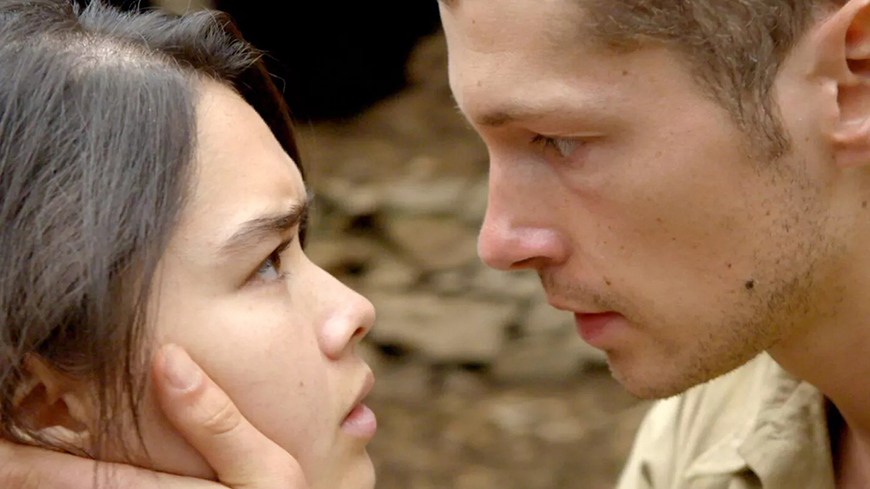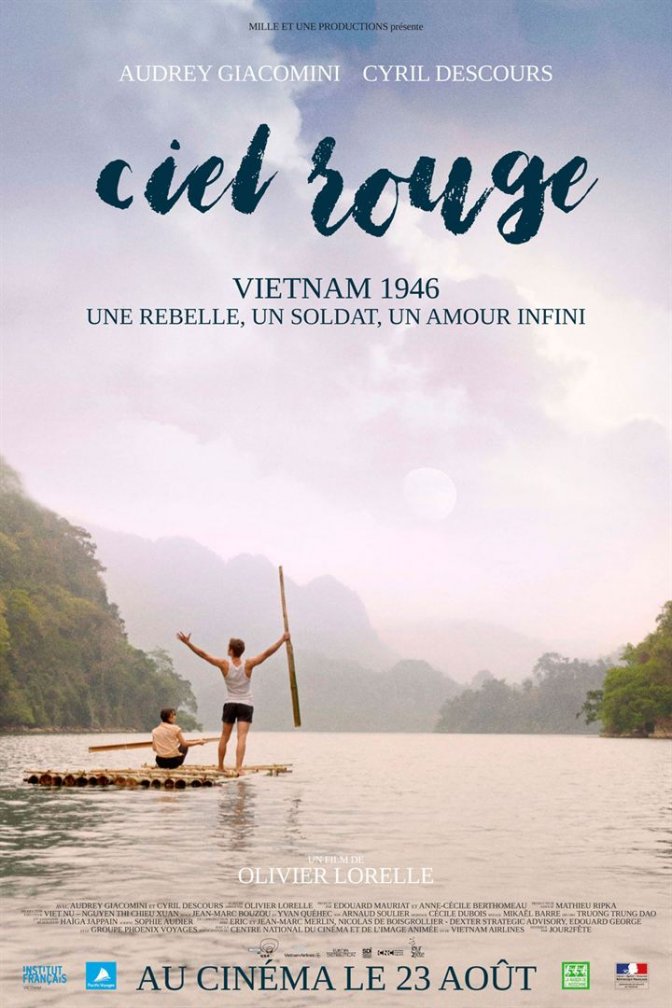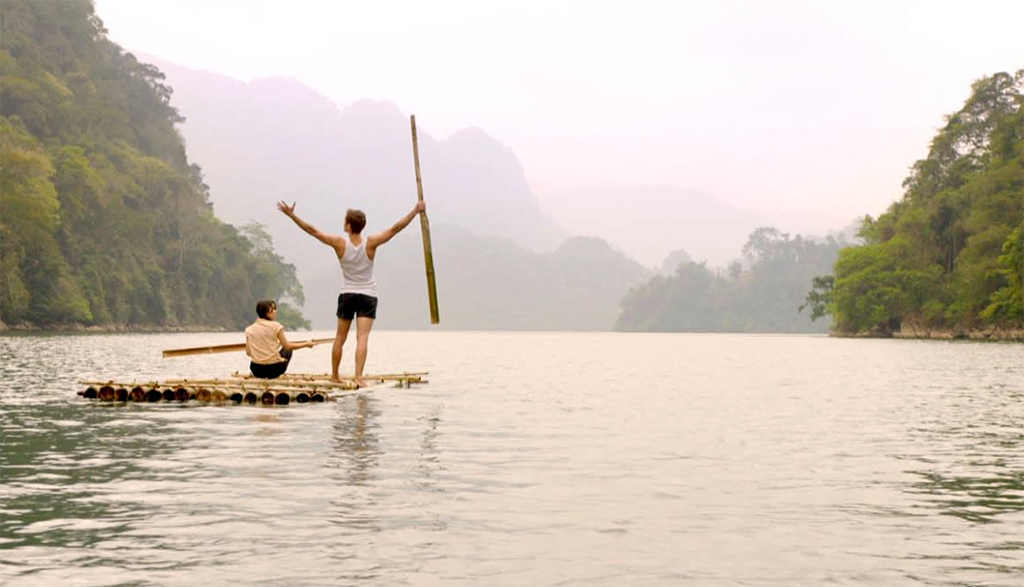Nestled in the heart of Vietnam, the Ba Be National Park, in the province of Bắc Kạn, unveils a breathtaking panorama. Its deep green waters, lush forests, and impressive limestone karsts make it a dream setting for filmmakers from around the world. This natural gem has seduced many directors, especially French ones, eager to capture its wild beauty on film.

“Ciel Rouge”: Ba Be in the Spotlight
Olivier Lorelle is a screenwriter, film director, dialogue writer and adapter. An established screenwriter, his work, particularly on subjects of war and politics (he is screenwriter of “Indigènes” and “Hors la loi”), has made him a recognized talent, ideal for bringing an ambitious project like Ciel Rouge to fruition.
“Ciel Rouge”, released in 2017, particularly showcased the grandiose landscapes of the park. This poignant work, telling the story of a French deserter during the Indochina War, uses Ba Be’s majestic nature as a backdrop. The striking images in the film have helped to promote this exceptional site beyond Vietnamese borders, attracting the attention of film enthusiasts and nature lovers worldwide.
“The idea came to me ten years ago. But I’m a screenwriter, and in those ten years I’ve only written for other films. The starting point for my film is a man’s fascination with his enemy, a very brave woman. I need a battle, between two people from two totally different cultures. I need a war, not on the battlefield, but in a place where the soldier loses himself. I was drawn to the jungle,” says the French director. What I want to convey to the public is not the image of war, but a message about the meaning of love: what is love, what can it bring us in life“.

Cinematic Impact on Tourism in Ba Be
The Power of the Big Screen
Films shot in the Ba Be National Park have had a significant impact on tourism in the region. This phenomenon, known as “film tourism” or “cine-tourism,” is not unique to Ba Be, but has taken on particular significance there.
After the release of “Red Sky”, the park experienced a notable increase in tourist visits. According to local statistics, the number of visitors rose by nearly 30% in the two years following the film’s release. This increase is directly attributed to the media exposure provided by Olivier Lorelle’s feature film.
Before the screening of these films, Ba Be mainly attracted Vietnamese tourists and some well-informed foreign adventurers. The international visibility brought by cinema has significantly widened the geographical origin of visitors. There has been a significant increase in French tourists, as well as visitors from other European and North American countries.
The impact of cinema on tourism in Ba Be perfectly illustrates the power of images in our modern society. While showcasing the natural beauty of Vietnam, this phenomenon also highlights the importance of thoughtful and sustainable tourism management to preserve these natural treasures for future generations.
Vietnam and French Cinema:
A Love Story
The links between Vietnam and French cinema are deep-rooted in history. This cinematic relationship dates back to the colonial era and has continued long after the country’s independence. Many French directors have been captivated by the diversity of Vietnamese landscapes, from the mythical Halong Bay to the terraced rice fields in the north, and the tropical forests in the central region.
“Indochine” by Régis Wargnier, released in 1992, perfectly illustrates this fascination. This film, awarded several Césars and an Oscar for Best Foreign Language Film, highlighted the beauty of former French Indochina. Several iconic scenes were shot in Halong Bay, contributing to the international renown of this exceptional natural site.

The Allure of Vietnam for Filmmakers
Several factors explain the allure of Vietnam for filmmakers worldwide:
- Unparalleled landscape diversity:
From the rugged mountains in the north to the sandy beaches in the south, through fertile deltas and lush jungles, Vietnam offers a variety of natural settings suitable for all types of scenarios.
- Rich historical heritage:
The country’s complex history, marked by the colonial period, wars, and reconstruction, provides a fascinating backdrop for diverse and captivating narratives.
- Authentic and welcoming culture:
Known for their hospitality and open-mindedness, the Vietnamese greatly facilitate the work of foreign film crews, creating an environment conducive to cinematic creation.
Ba Be National Park:
More Than Just a Set
Beyond its natural beauty, the Ba Be National Park is a place steeped in history and symbolism. By choosing this site as a backdrop, filmmakers invite us not only to discover the wild beauty of Vietnam but also to immerse ourselves in a millennia-old culture. Each film shot in this exceptional setting contributes to preserving and sharing this unique natural and cultural heritage with the world.
Thus, the Ba Be National Park continues to inspire artists and captivate audiences, proving that the magic of cinema can transcend borders and connect us to the raw beauty of nature.
More to read (in French) :
Ciel Rouge, un film français tourné dans les montagnes vietnamiennes


